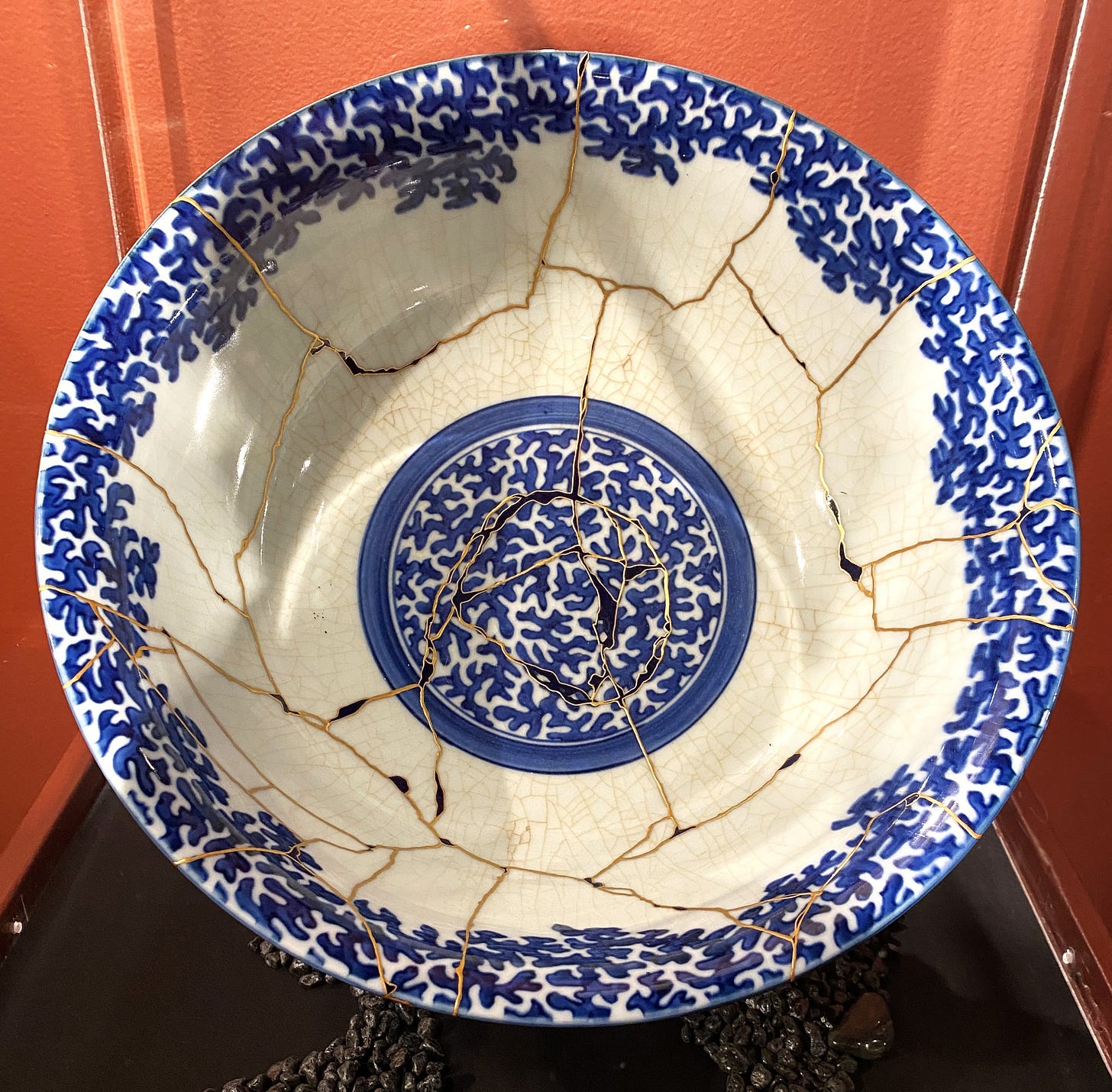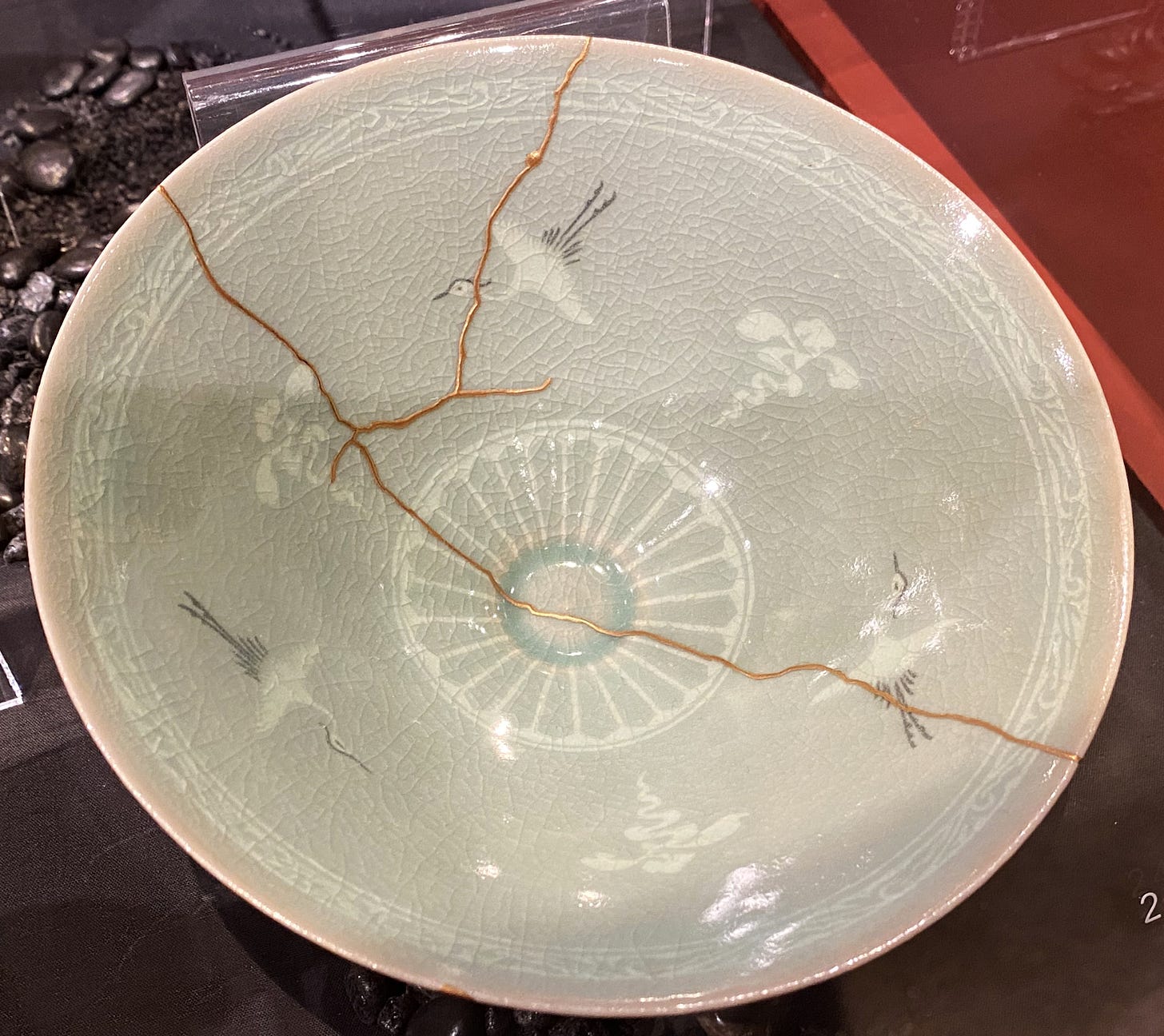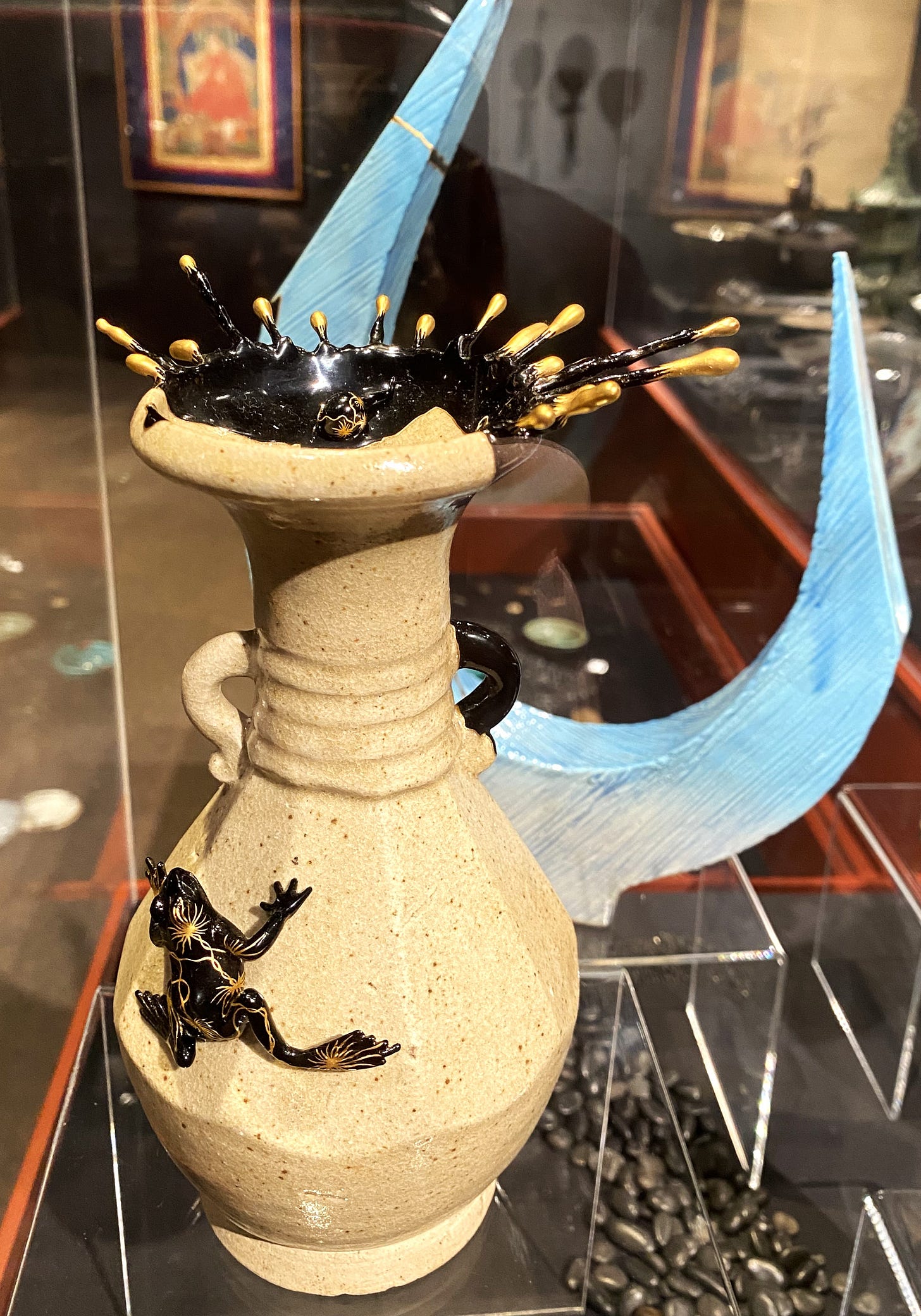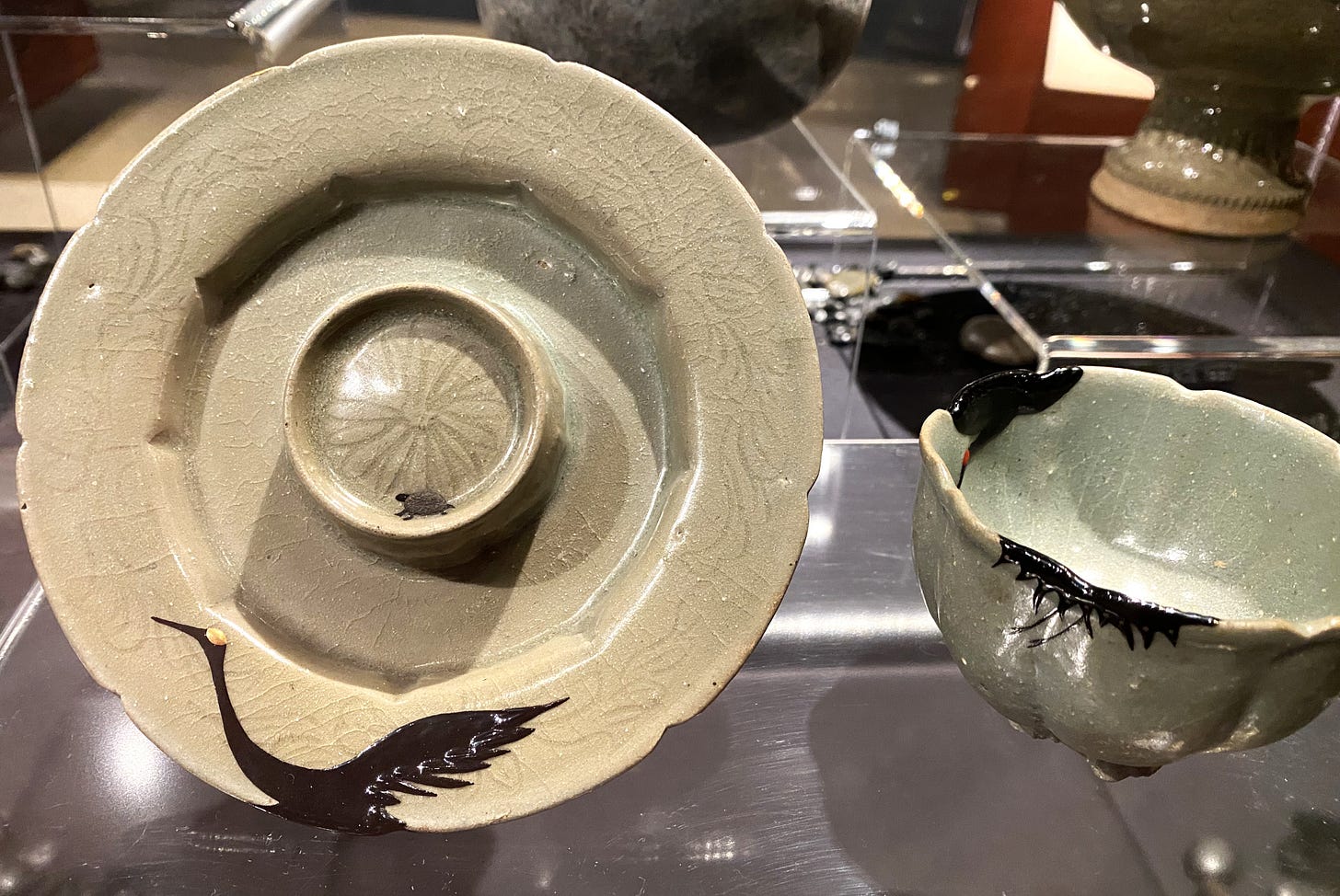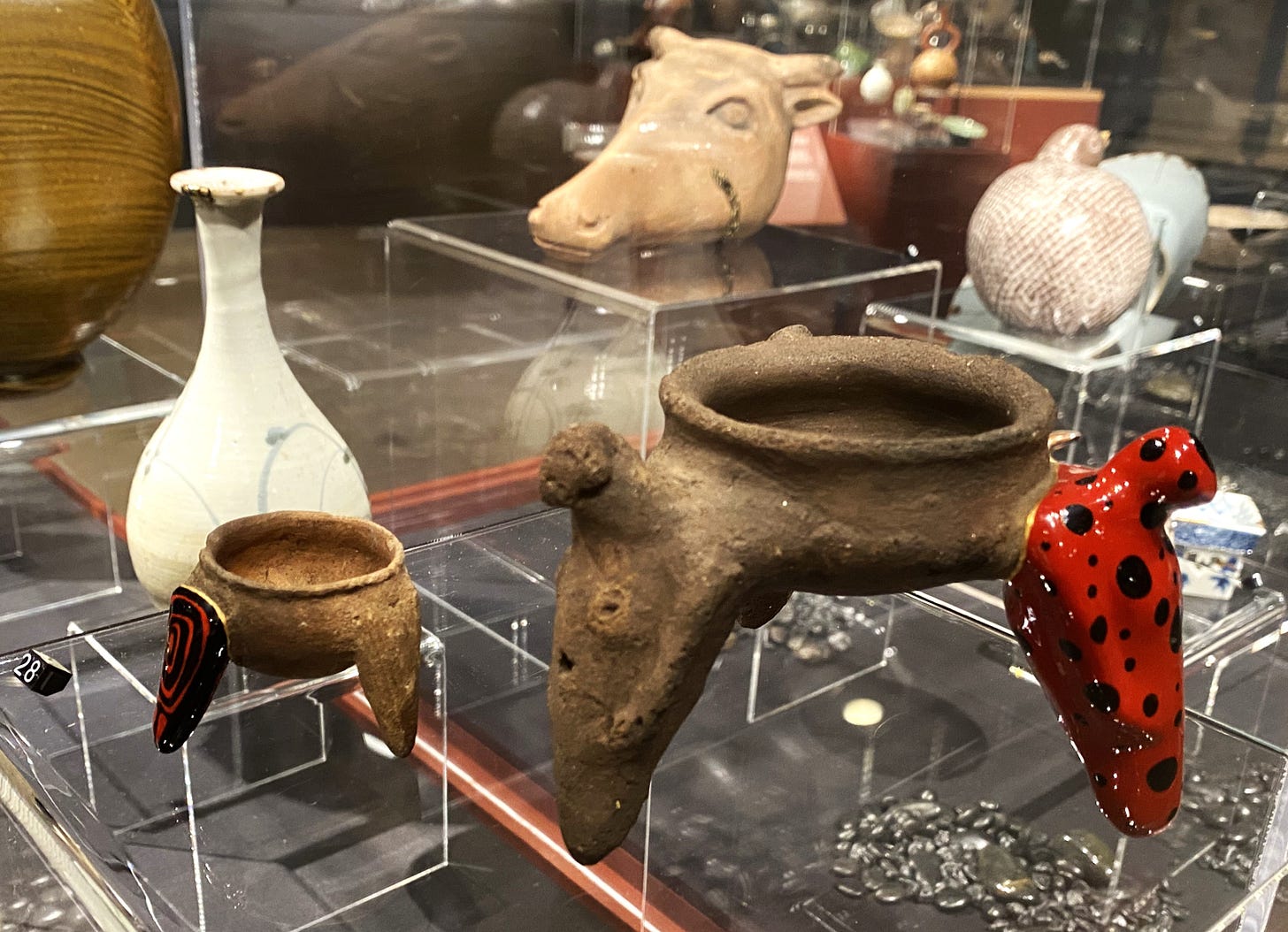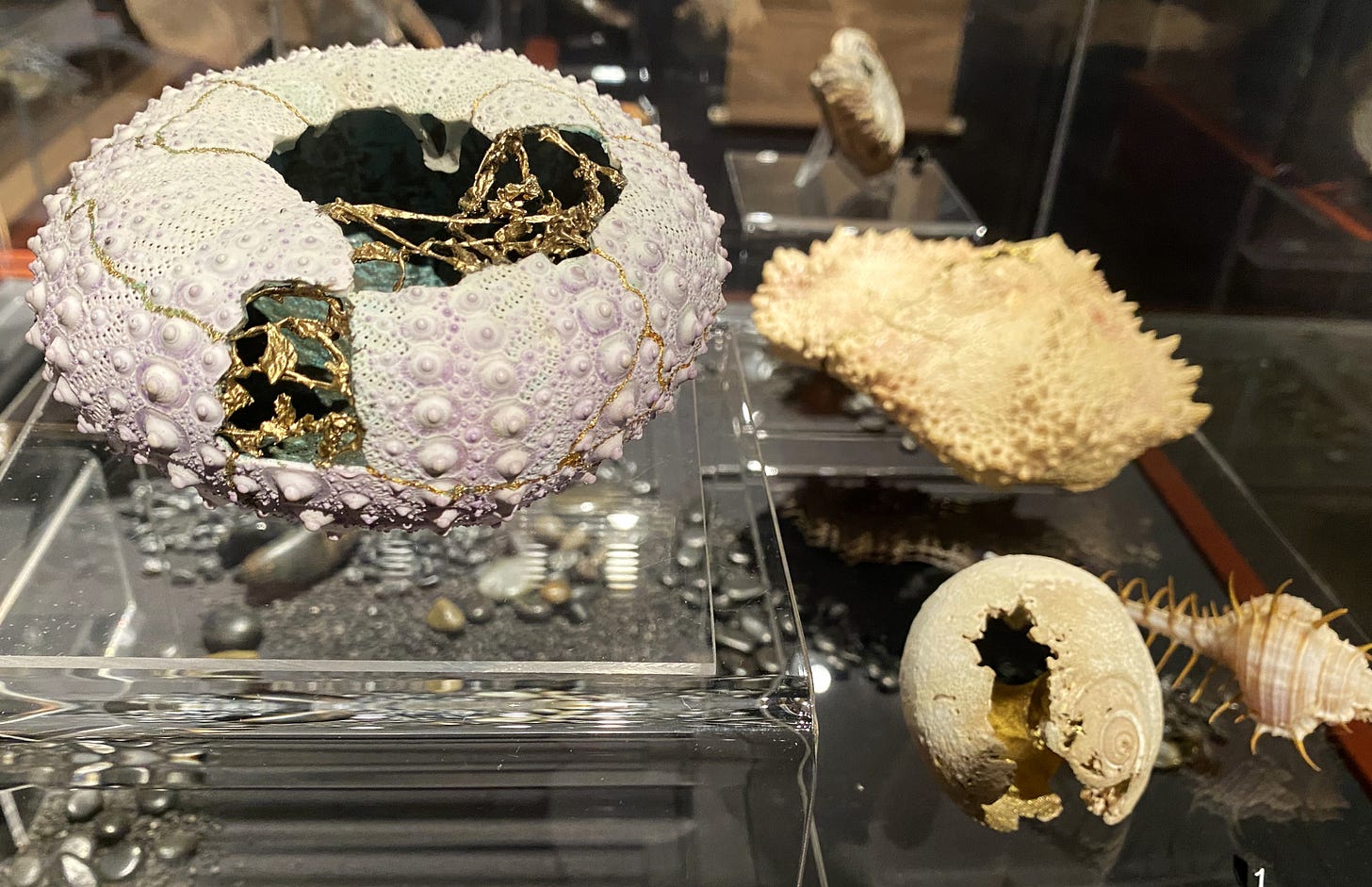Beauty of Mending: Kintsugi and Beyond
“The act of repair has long been a rhythm of everyday life, and Kintsugi is part of that legacy. Mending isn’t just practical but is a gesture of respect for the things that have served us well, and for craftsmanship and sustainability.”
One of the current exhibits at the Art Gallery of Greater Victoria is entitled Beauty of Mending: Kintsugi and Beyond. It invites viewers “to pause and reflect on the quiet power of imperfection.” Kintsugi is a centuries-old technique of mending damaged pottery with lacquer and gold.
A number of the pieces in the exhibit are by Naoko Fukumaru who transforms discarded broken pieces into new forms. Her works are accompanied by works from the Gallery’s collection – ink paintings with broken ink and dry brushstroke techniques, ceramics with natural crackle patterns, and ancient oracle bones that are broken to foretell the future. It’s a fascinating exhibit that contrasts profoundly with our modern throwaway culture.
Some of the pieces in the exhibit are broken but all the pieces are still present. In other cases, pieces have been lost, and the missing pieces are recreated using other materials to fill the gaps. “The added pieces may be shaped and gilded to seamlessly blend into the original, or they might stand out as bold, intentional additions.”
Some ceramics are imperfect when they emerge from the kiln or have been damaged over time. Rather than hiding the imperfections, they are highlighted, serving as the foundation for a new creation.
A few of the pieces in the exhibit are natural forms – a sea urchin or a shell – reminding us of the universality of repair and renewal.
Further information: Kintsugi [Wikipedia]




